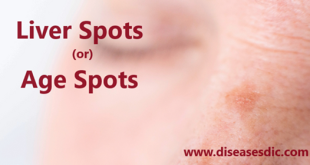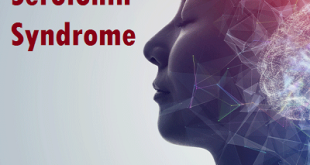Definition
Lissencephaly, which literally means “smooth brain,” is a rare, gene-linked brain malformation characterized by the absence of normal convolutions (folds) in the cerebral cortex and an abnormally small head (microcephaly). In the usual condition of lissencephaly, children usually have a normal-sized head at birth. In children with reduced head size at birth, the condition microlissencephaly is typically diagnosed.
Lissencephaly is caused by defective neuronal migration during embryonic development, the process in which nerve cells move from their place of origin to their permanent location within the cerebral cortex gray matter. Symptoms of the disorder may include unusual facial appearance, difficulty swallowing, failure to thrive, muscle spasms, seizures, and severe psychomotor retardation. Hands, fingers, or toes may be deformed.
Comparative image of a brain showing lissencephaly (left) and normal brain (right)
Lissencephaly may be associated with other diseases including isolated lissencephaly sequence, Miller-Dieker syndrome, and Walker-Warburg syndrome. Sometimes it can be difficult to distinguish between these conditions clinically so consultation with national experts is recommended to help ensure correct diagnosis and possible molecular testing.
Types of Lissencephaly
There are two major types:
- Classical lissencephaly (also known as type 1 lissencephaly), with reduced gyration and cerebral cortical thickening, this may occur in isolation or with other congenital abnormalities, for example as part of a 17p microdeletion – Miller-Dieker syndrome
- Cobblestone lissencephaly (also known as type 2 lissencephaly), with reduced gyration and a nodular appearance to the cortex, is associated with structural abnormalities of the cerebellum and brainstem, and commonly occurs with eye and muscle involvement – Fukuyama congenital muscular dystrophy, muscle-eye-brain disease, and Walker-Warburg syndrome
Lissencephaly may co-occur with any of a large number of other structural brain abnormalities, such as abnormality in ventricular appearance, of the corpus callosum, of the septum pellucidum and hypoplasia of the pyramidal tracts
Causes of Lissencephaly
- Lissencephaly is often considered a genetic condition, though sometimes a viral infection or poor blood flow to the fetus may cause it. Scientists have identified malformations in several genes as contributors to lissencephaly. But research into these genes is ongoing. And mutations in these genes cause varying levels of the disorder.
- It develops when a fetus is 12 to 14 weeks old. During this time nerve cells begin to move to other areas of the brain as it develops. But for fetuses with lissencephaly, the nerve cells don’t move.
- The condition can occur on its own. But it’s also associated with genetic conditions such as Miller-Dieker syndrome and Walker-Warburg syndrome.
Symptoms
There is a wide range of symptoms that may occur in people diagnosed with lissencephaly. Some children have few if any of these symptoms and others may have many. The severity of symptoms can also vary widely. Possible symptoms of lissencephaly include:
- Failure to thrive: Failure to thrive is a condition often seen in newborns in which growth is not occurring as expected. It can have many causes
- Intellectual impairments: Intelligence can range from near normal to profound impairments
- A seizure disorder: A seizure disorder occurs in around 80 percent of children with the condition
- Difficulty swallowing and eating
- Difficulty controlling his/her muscles (ataxia)
- Initially reduced muscle tone (hypotonia) followed by stiffness or spasticity of arms and legs
- Unusual facial appearance with a small jaw, high forehead, and indentation of the temples. Abnormalities of the ears and upturned nasal openings may also be noted
- Abnormalities of the fingers and toes, including extra digits (polydactyly)
- Developmental delays can range from mild to severe
- A smaller than normal head size (microcephaly)
Complications
The trouble with breathing and swallowing and seizures are common causes of death among people who have lissencephaly.
Parents should remember every case is different. Although some children with the condition don’t live past age 10, others go on to become adults. You should seek out a specialist to give you more information about your child’s condition and support services.
Diagnosis and test
- In case if there is a family history of Lissencephaly in any of the parents then they can go for an ultrasound examination at about 20 weeks of pregnancy to check whether the fetus has Lissencephaly or not.
The condition is normally diagnosed during birth or within the first few months of life with the help of imaging tests, such as:
- Magnetic resonance imaging (MRI) scan
- Computed tomography (CT) scan
- Ultrasound scan
- Apart from this, for confirmative diagnosing Lissencephaly, the treating physician after observing the symptoms may recommend advanced imaging of the brain in the form of CT or MRI scans to look for areas where folding has not taken place of the brain and confirm the diagnosis and degree of severity of Lissencephaly.
- The majority of children suffer from grade III which is the mild form of Lissencephaly.
Lissencephaly treatment
- The treatment of lissencephaly type 1 is directed toward the specific symptoms that are apparent in each individual. Treatment may require the coordinated efforts of a team of specialists.
- Pediatricians, neurologists, and other health care professionals may need to systematically and comprehensively plan an affected child’s treatment.
- Therapies for individuals with lissencephaly type 1 are symptomatic and supportive. Treatment may include measures to improve the intake of nutrients in infants with feeding difficulties; the administration of anticonvulsant drugs to help prevent, reduce, or control seizures; and/or other measures.
- Genetic counseling is recommended for families of affected children.
Prognosis
- The outcome for this condition depends on the extent of brain malformation. Numerous patients show no major signs of development beyond 3 to 5-months after birth. Some individuals may display near-normal intelligence and development. Life expectancy for the patients of this condition can vary greatly.
- With proper medical treatment and care, many children can live up to their teen years. However, a lot of sufferers die before they reach 10 years of age.
- Respiratory diseases are the principal causes of death associated with lissencephaly. Other factors causing death include severe seizures or aspiration of foods or fluids.
 Diseases Treatments Dictionary This is complete solution to read all diseases treatments Which covers Prevention, Causes, Symptoms, Medical Terms, Drugs, Prescription, Natural Remedies with cures and Treatments. Most of the common diseases were listed in names, split with categories.
Diseases Treatments Dictionary This is complete solution to read all diseases treatments Which covers Prevention, Causes, Symptoms, Medical Terms, Drugs, Prescription, Natural Remedies with cures and Treatments. Most of the common diseases were listed in names, split with categories.







